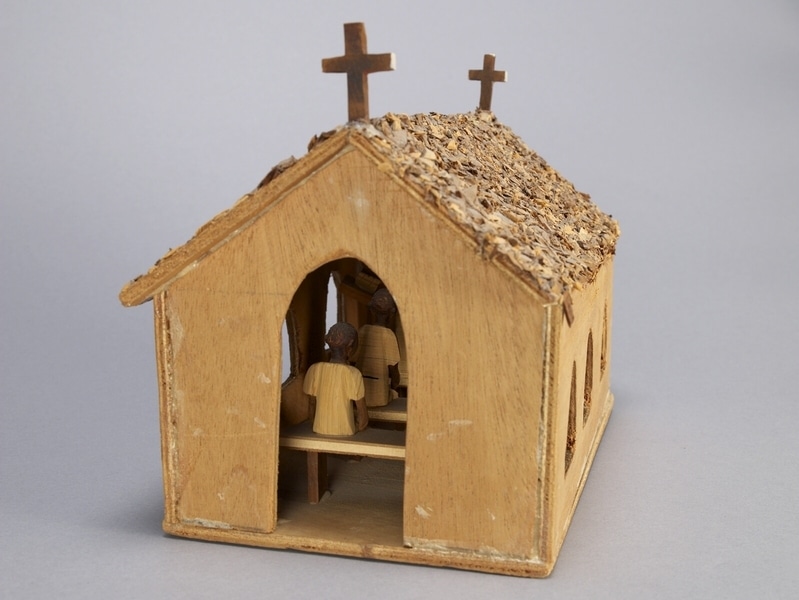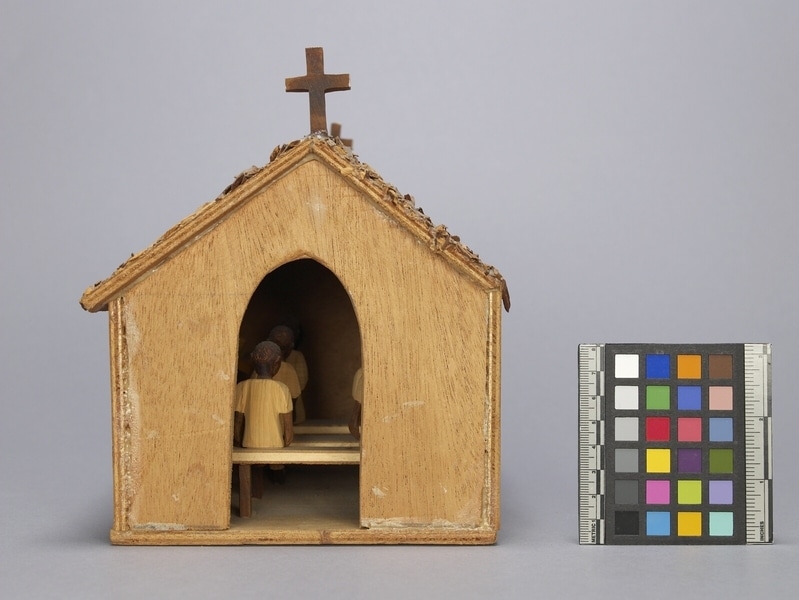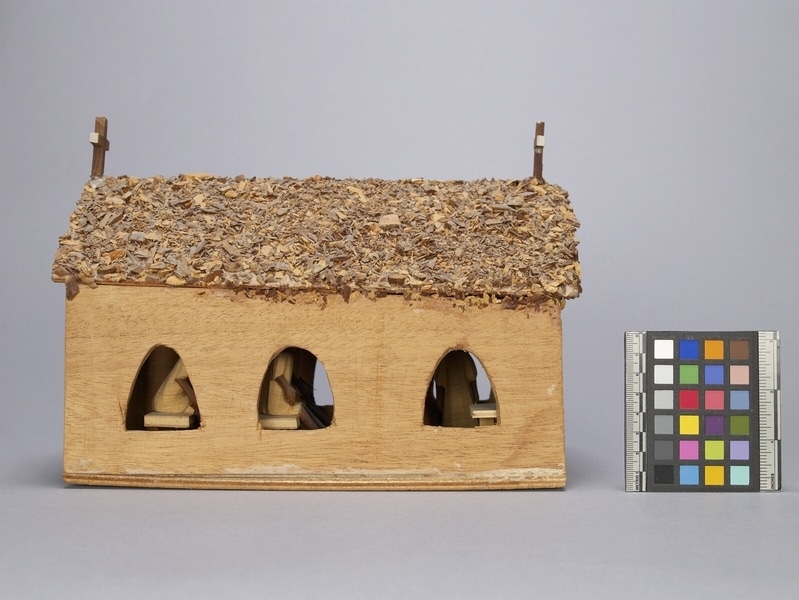Thorn Carving Item Number: Af415 from the MOA: University of British Columbia



Description
A representation of a rectangular church with six rounded arched windows, a rounded door, and a cross at either end of the pitched roof. The roof is covered with variegated shavings. The interior is furnished with three benches, a lectern, and a table. The standing figure is in an ankle length robe and is in front of a book on the lectern. There are six sitting figures, two to each bench, wearing short-sleeved shirts and shorts. The sides, and the front of the church, and the benches are yellow-brown. The figures, bench supports, and crosses are dark brown. Clothing and book are light yellow-brown.
History Of Use
Thorn carvings are miniatures depicting scenes from Nigerian life. This type of carving began circa 1930. Thorns vary in size. They can be as large as 12.7 cm. long and 9.6 cm. wide. They are comparatively soft and easily carved. The light yellow-brown thorn and the dark brown thorn come from the Ata tree; the light red-brown thorn comes from Egun trees. The parts are glued together with viscous paste made from rice cooked with water. They are carved by men.
Cultural Context
craft; tourist art
Item History
- Made in Nigeria before 1972
- Collected during 1972
- Owned by Andrew Stewart and Jessie Stewart before February 8, 1980
- Received from Andrew Stewart (Donor) and Jessie Stewart (Donor) on February 8, 1980
What
- Name
- Thorn Carving
- Identification Number
- Af415
- Type of Item
- carving
- Material
- egun thorn, atum thorn, rice adhesive and wood
- Manufacturing Technique
- carved and glued
- Overall
- height 20.7 cm, width 17.5 cm, depth 28.0 cm
Who
- Culture
- Yoruba
- Previous Owner
- Andrew Stewart and Jessie Stewart
- Received from
- Andrew Stewart (Donor) and Jessie Stewart (Donor)
Where
- Holding Institution
- MOA: University of British Columbia
- Made in
- Nigeria
When
- Creation Date
- before 1972
- Collection Date
- during 1972
- Ownership Date
- before February 8, 1980
- Acquisition Date
- on February 8, 1980
Other
- Item Classes
- carvings & sculpture
- Condition
- good
- Accession Number
- 0590/0101